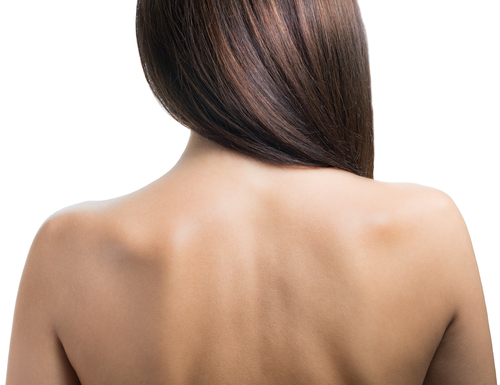Types of scleroderma and typical symptoms:
Scleroderma may just affect the skin, and this is known as the localised scleroderma; or it may involve the blood circulation and internal organs as well as the skin, and this is known as systemic sclerosis.
Localised scleroderma
Localised scleroderma is the mildest form, and affects children most often, but can still occur at any age.
There are two types, and these are:
- Morphoea: This is also known as the generalized morphea, because it can affect the blood vessels and the internal organs. This type start out as red or purple, and then turn whitish in the center. Eventually, this will look like discolored oval patches on the skin that is hairless, itchy, shiny, and appear anywhere in the body. This may improve after a few years and treatment may not be needed.
- Linear: This type appears as lines along the face, scalp, legs or arms. This may affect the underlying bone and muscle, but also improves after a few years.
Systemic sclerosis
Systemic sclerosis, is also known as the generalized scleroderma. This types involves the internal organs and the skin. It mostly affects women and usually develops between 30 and 50 years of age. Children are rarely affected.
There are also two types of systemic sclerosis, and these are the:
- Limited cutaneous systemic sclerosis: This is a milder form that only affects the skin on the hands, lower arms, feet, lower legs and face. It starts as a circulation problem wherein the fingers and toes turn white in the cold, known as Raynaud’s phenomenon. This tend to worsen over time, but it remains to be less severe than the diffuse type and can be controlled with treatment. Other symptoms include, thickening of the skin over the hands, feet and face, red spots on the skin, hard lumps under the skin, heartburn and difficulty of swallowing (dysphagia). This is sometimes referred to as the CREST syndrome.
- Diffuse systemic sclerosis: This is more likely to affect the whole body and the internal organs. Symptoms come on quickly and get worse over the first few years, but condition normally settles and the skin gradually improve. Other symptoms include, weight loss, fatigue, and joint pain and stiffness.
Since scleroderma may involve the whole body, here are the symptoms that may appear:
- Hardened and thickened skin that looks shiny and smooth
- Raynaud’s phenomenon (cold fingers that turn red or blue)
- Ulcers or sores on fingertips
- Telangiectasia (small red spots on the face and chest, caused by ruptures small blood vessels)
- Swollen or painful fingers or toes
- Muscle weakness
- Dry eyes or mouth
- Shortness of breath
- Heartburn
- Diarrhea
- Weight loss


